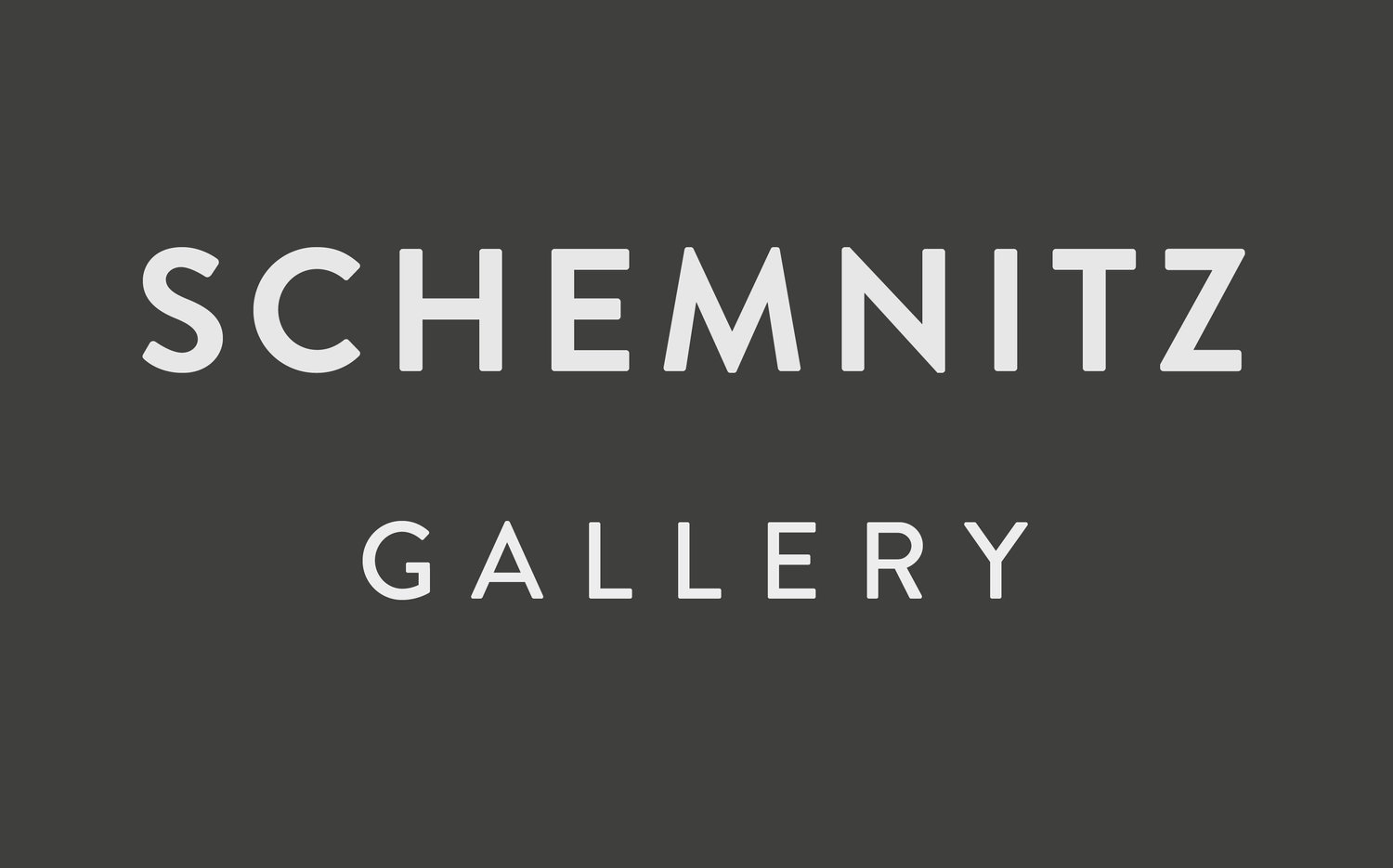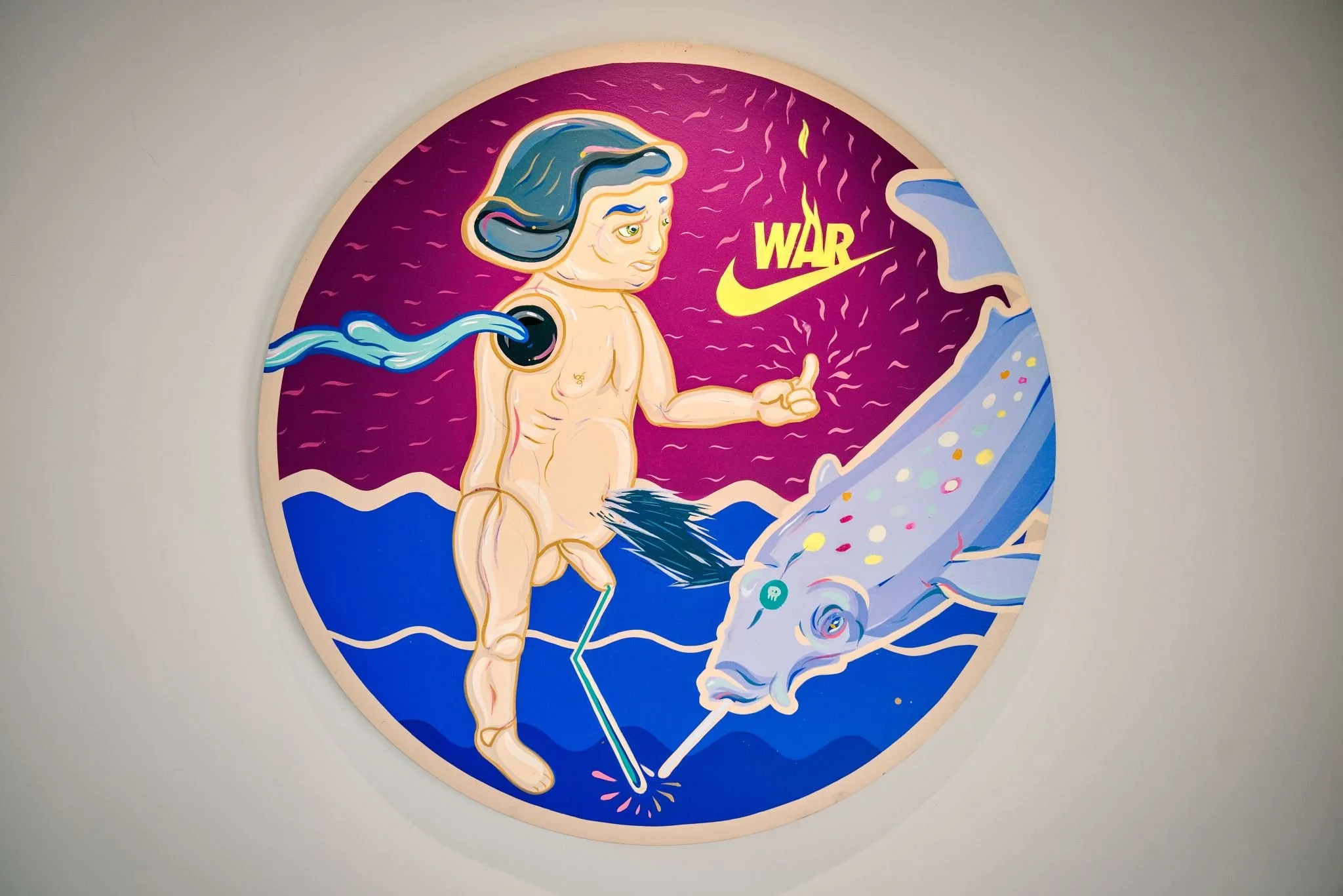Erik Šille
MÁME PROBLÉMY, ALE ASPOŇ NIE JEDEN\
We’ve Got Problems — at Least Not Just One
Kurátorka: Miroslava Urbanová
Vernisáž: 6.6.2025 o 19:00 hod
Výstava: 7.6.2025 - 14.7.2025
Samostatná výstava Erika Šilleho s názvom „Máme problémy, ale aspoň nie jeden“ nepredstaví tentokrát to úplne najnovšie z tvorby autora.
Erik Šille's solo exhibition entitled “We’ve Got Problems — at Least Not Just One” will not present the very latest of the artist's work this time.
Vystavené obrazy majú za sebou provenienčný príbeh, ktorý dnes istým spôsobom komplikuje ich ďalšie čítanie. Vychádzajú z každodennej reality doby polykríz, ktorá je nielen buzzwordom anotácií spoločensko-kritických diel a projektov, ale aj niečím, s čím sa svojím spôsobom na obrazovej ploche v spleti popkultúrnych odkazov, vyrovnáva Šille neustále.
Je jeho ironický odstup a istý level cringe stratégiou alebo symptómom? Akú zodpovednosť preberajú umelci a umelkyne, do ktorých diel je explicitne vpletené politikum — za ich možné interpretácie či za ich cirkuláciu na rôznych inštitucionálnych platformách?
Erik Šille (1978) študoval na Vysokej škole výtvarných umení v Bratislave (2000-2006) u profesora Ivana Csudaia, kde bol v rokoch 2006 až 2010 doktorandom. Bol súčasťou mikrogenerácie maliarov, ktorí sa postarali o dnes už legendárny návrat maľby do slovenského súčasného umenia. Nevenuje sa iba vlastnej tvorbe, ale svoje skúsenosti odovzdáva aj študentom kresby a maľby na Katedre výtvarnej tvorby a výchovy na UKF v Nitre.
The exhibited paintings have a provenance story behind them, which today in a way complicates their further reading. They are based on the everyday reality of the era of polycrisis, which is not only a buzzword for annotations of socially critical works and projects, but also something that Šille constantly deals with in his own way on the pictorial surface in a tangle of pop cultural references.
Is his ironic distance and a certain level of cringe a strategy or a symptom? What responsibility do artists, male and female, take on whose works politics are explicitly involved — for their possible interpretations or for their circulation on various institutional platforms?
Erik Šille (1978) studied at the Academy of Fine Arts in Bratislava (2000-2006) under Professor Ivan Csudai, where he was a doctoral student from 2006 to 2010. He was part of the microgeneration of painters who ensured the now legendary return of painting to Slovak contemporary art. He is not only dedicated to his own work, but also passes on his experience to students of drawing and painting at the Department of Painting at the Academy of Fine Arts in Bratislava.
Maľby Erika Šilleho sú plné pozoruhodných vzťahov na disociačnej škále medzi predovšetkým neľudskými aktérmi, ktorí slúžia ako zástupné symboly jednotlivcov, kultúrnych okruhov, situačných výpovedí či emočných stavov. Interagujú na ploche plátna v podobách a polohách, ktoré sú v protiklade s ich prvotnou roztomilosťou, fenoménom cuteness, ktorý umelci a umelkyne cielene využívajú ako estetickú stratégiu pre subverzívnu kritiku. Ovplyvnený popkultúrnymi vplyvmi nielen z euroamerického okruhu, ale aj Japonska, kam sa opakovane a rád vracia, si Šille privlastňuje a vytvára postavičky, ktoré síce môžu byť na istom území endemitmi, ale žijú si svoj globalizovaný príbeh nerovností a exploatácie v esteticky vyčistenom, priam reklamnom prevedení. Vyslovene roztiecť sa ich necháva až na citlivejšej ploche papiera prostredníctvom autorskej techniky použitím guľôčkového antiperspirantu, spotrebného tovaru tu vytvárajúceho opačný efekt, než na ktorý bol vyrobený.
Samostatná výstava Erika Šilleho s názvom „Máme problém, ale aspoň nie jeden“ nepredstaví tentokrát to úplne najnovšie z tvorby autora. Vystavené obrazy majú za sebou provenienčný príbeh, ktorý dnes istým spôsobom komplikuje ich ďalšie čítanie. Väčšina diel je datovaná do roku 2023, no v Banskej Štiavnici majú viac-menej svoju premiéru. Na žiadosť autora sa po dvoch rokoch vrátili na Slovensko z Izraelu, ktorého súčasná politika spojená s genocidálnym vyhladzovaním palestínskeho obyvateľstva v pásme Gazy, sa stala nielen živou nočnou morou Palestínčanov a Palestínčaniek, ale aj skúškou ľudskosti a empatie jednotlivcov a skupín na pozadí historických naratívov o vyrovnávaní sa s temnou históriou 20. storočia, na intersekcii pretrvávajúcich rasových, náboženských a triednych hierarchií. Propalestínska angažovanosť umelcov a umelkýň sa stala aj v zdanlivo slobodných krajinách ako Nemecko a inak hodnotovo pomerne koherentnej umeleckej scéne, dôvodom na rušenie výstav či prepúšťanie. Momentálne sledujeme už aj u nás vo viditeľnejšej miere príklon minimálne k odsúdeniu humanitárnej situácie, no väčšinový diskurz táto kríza ľudskosti nezasiahla a biznis so zbraňami beží ďalej.
Šilleho zaujímajú rôzne druhy konfliktov – vrátane tých bytostne vnútorných. Zároveň si je vedomý, že vojenský konflikt nemá iba víťazov a porazených, ale hlavne množstvo obetí cynickej mašinérie teritoriálneho a mocenského boja. Akú zodpovednosť preberajú umelci a umelkyne, do ktorých diel je explicitne vpletené politikum — za ich možné interpretácie či za ich cirkuláciu na rôznych inštitucionálnych platformách? Ako sa dá prostredníctvom umenia zasiahnuť do celospoločenského diskurzu bez (seba)cenzúry spôsobom, ktorý využije potenciál na otváranie otázok, pred ktorými inak odvraciame zrak? Šilleho maľby vychádzajú z každodennej reality doby polykríz, ktorá je nielen buzzwordom anotácií spoločensko-kritických diel a projektov, ale aj niečím, s čím sa svojím spôsobom na obrazovej ploche v spleti popkultúrnych odkazov, ako autor vyrovnáva neustále. Postavičky z jeho obrazov odhaľujú svoje bezútešné stavy niekedy až na kosť. Je jeho ironický odstup a istý level cringe (pocitu trápnosti z druhého) premyslenou stratégiou alebo bolestivým symptómom doby, v ktorej nevieme prežívať emócie bez toho, aby sme sa hanbili?
Erik Šille's paintings are full of remarkable relationships on a dissociative scale between primarily non-human actors that serve as placeholders for individuals, cultural circles, situational statements, or emotional states. They interact on the canvas in forms and positions that are in contrast to their primary cuteness, the phenomenon that artists purposefully use as an aesthetic strategy for subversive criticism. Influenced by pop cultural influences not only from the Euro-American circle, but also from Japan, where he repeatedly and often returns, Šille appropriates and creates characters that may be endemic to a certain territory, but who are living their globalized story of inequality and exploitation in an aesthetically refined, almost advertising-like form. They are allowed to dissolve explicitly on a more sensitive surface of paper through the author's technique of using a ballpoint antiperspirant, a consumer product that creates here the opposite effect to the one for which it was made.
Erik Šille's solo exhibition entitled "We have a problem, but at least not one" will not present the very latest of the author's work this time. The exhibited paintings have a provenance story behind that today in a way that complicates their further reading. Most of the works are dated to 2023, but they have more or less their premiere in Banská Štiavnica. At the author's request, they returned to Slovakia after two years from Israel, whose current policy associated with the genocidal extermination of the Palestinian population in the Gaza Strip has become not only a living nightmare for Palestinians, but also a test of the humanity and empathy of individuals and groups against the background of historical narratives about coming to terms with the dark history of the 20th century, at the intersection of persistent racial, religious and class hierarchies. The pro-Palestinian engagement of artists has become a reason for the cancellation of exhibitions or dismissals even in seemingly free countries like Germany and in an otherwise relatively coherent art scene. Currently, we are also observing a more visible inclination in our country to at least condemn the humanitarian situation, but this crisis of humanity has not affected the majority discourse and the arms business continues.
Šille is interested in various types of conflicts – including those that are essentially internal. At the same time, he is aware that a military conflict does not only have winners and losers, but mainly many victims of the cynical machinery of territorial and power struggles. What responsibility do artists, whose works are explicitly involved in politics, take on — for their possible interpretations or for their circulation on various institutional platforms? How can art intervene in societal discourse without (self-)censorship in a way that uses the potential to open up questions that we otherwise turn a blind eye to? Šille's paintings are based on the everyday reality of the time of polycrises, which is not only a buzzword for annotations of socially critical works and projects, but also something that the author, in his own way, constantly deals with on the pictorial surface in a tangle of pop culture references. The characters in his paintings reveal their bleak states, sometimes to the bone. Is his ironic detachment and a certain level of cringe (feeling embarrassed by the action of another person) a deliberate strategy or a painful symptom of an era in which we cannot experience emotions without feeling ashamed?






















































































